Tools for On-Page Image Usage Analysis
Essential Tools for on-Page Image Usage Analysis In today’s digital landscape, webmasters understand that images are more than visual garnishes; they’re pivotal for user engagement and SEO […]
Essential Tools for on-Page Image Usage Analysis
In today’s digital landscape, webmasters understand that images are more than visual garnishes; they’re pivotal for user engagement and SEO rankings.
Optimizing on-page images requires tools that not only enhance aesthetics but also fortify SEO efforts by ensuring every visual element serves a strategic purpose.
From automatic alt-text generators to sophisticated analytics for monitoring image performance, these tools empower webmasters to offer an enriched user experience.
By safeguarding the originality of content with image plagiarism checkers, websites safeguard their brand’s integrity.
Keep reading to discover the suite of tools that can transform your website’s imagery from mere decoration to a robust, searchable asset.
Key Takeaways
- Heatmap Tools Provide Visual Insights Into User Interactions, Guiding Image Placement Optimization
- Advanced Image Analysis Tools, Like SearchAtlas by LinkGraph, Enhance SEO by Ensuring Visual Content Quality and Performance
- Alt-Text Is Critical in SEO, and Tools Like SearchAtlas Improve Its Optimization Across Websites
- Image Plagiarism Checkers Within SEO Software Protect Brand Integrity and Contribute to Unique SEO Content
- Comprehensive Image Performance Analytics Are Integral for Informed Decision-Making and on-Page Strategy Refinement
Identifying the Best Image Analysis Tools for Webmasters
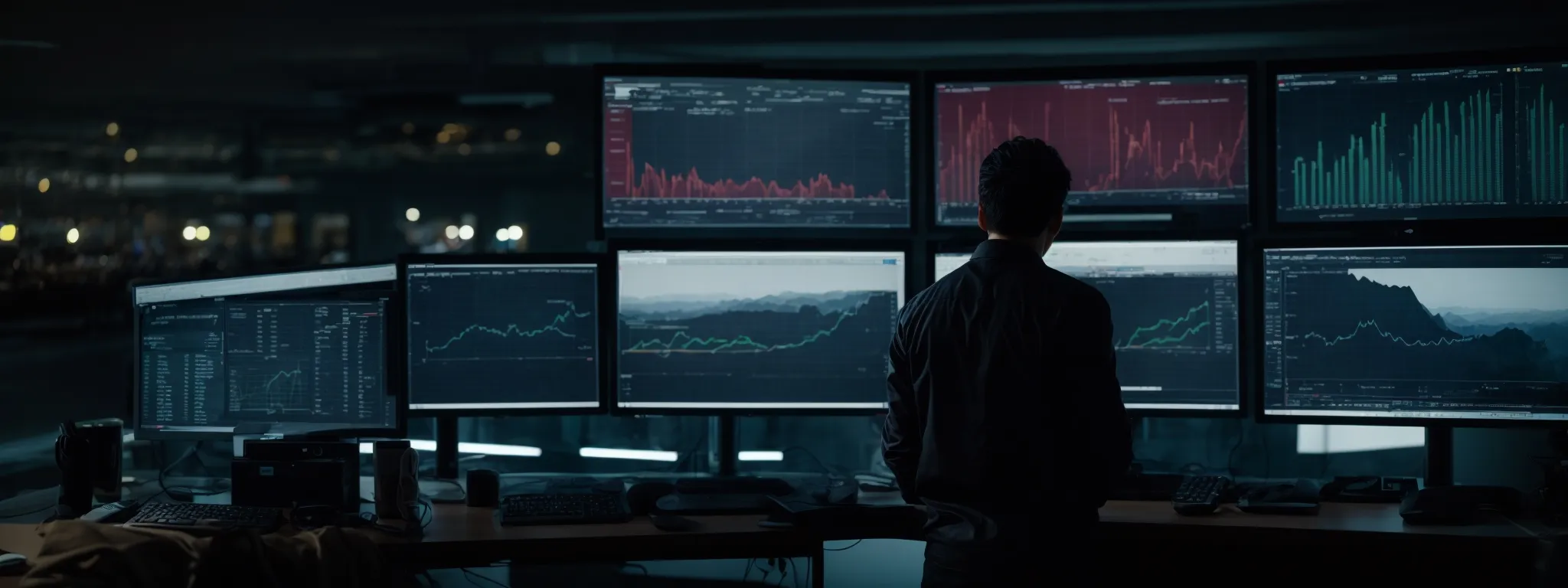
With the undeniable significance of visuals in driving user engagement, webmasters are tasked with the meticulous job of optimizing on-page images.
Success in this domain begins with a comprehensive evaluation of current image performance, establishing a baseline from which improvements can be gauged.
Selecting the appropriate set of tools for this task is not trivial; scalability is paramount to accommodate both burgeoning blogs and expansive e-commerce platforms alike.
Ease of integration with varying Content Management Systems (CMS) is a further critical determinant, ensuring a seamless workflow.
Beyond technical specifications, discerning webmasters delve into user reviews and seek out tools backed by robust community support, realizing that real-world application and the backing of a knowledgeable user base can often eclipse what is promised on paper.
These preliminary steps constitute the foundational groundwork for deploying image analysis tools that not only enhance image performance but also contribute to the overall user experience.
Begin With a Benchmark of Current Image Performance
Establishing a quantifiable starting point is the first critical move when aiming to enhance on-page image performance. Webmasters must utilize advanced analytics to measure key metrics such as load times, display resolution, and image file sizes across various devices.
These initial metrics serve not only to diagnose existing issues but also to set a clear baseline. It is from this juncture that web professionals can implement changes and monitor for tangible results, whether it’s via compression techniques or adopting next-gen image formats.
Evaluate Tool Scalability for Various Website Sizes
Selecting image analysis Tools That Scale With the Growth of one’s digital presence is vital for sustained success in optimizing visual content. Tools that cater to the dynamic needs of both small blogs and comprehensive retail websites ensure that webmasters have the flexibility to manage visual assets efficiently, regardless of site traffic volumes and database sizes.
Moreover, the adaptability of image analysis software to seamlessly integrate across varying web architectures enables businesses to maintain continuity in their image optimization practices. This adaptability becomes particularly invaluable as webmasters oversee multiple domains or pivot between projects with differing scopes and resource allocations.
Assessing Ease of Integration With Existing CMS
An essential consideration for webmasters when choosing an image analysis tool is its compatibility and ease of integration with their existing Content Management System. This ensures a more streamlined and less disruptive adoption process, allowing for the continuity of content management and image optimization operations across the webmaster’s digital properties.
Tools that offer plug-and-play functionality with popular CMS platforms, mitigating the need for extensive configuration or development resources, stand out in the industry. The refinement offered by such seamless integration empowers webmasters to focus on enhancing user experience and leave the complexities of system compatibility in the capable hands of the tool’s built-in adaptability.
Analyzing User Reviews and Community Support
Deliberation over user feedback becomes a vital step when webmasters select image analysis tools, as these insights often reveal practical strengths and shortcomings not immediately apparent through specifications alone. Community support, moreover, symbolizes a tool’s reliability and the presence of a collective intelligence, ready to provide solutions and workarounds to common challenges.
Tools that receive high praise for user-friendly interfaces and prompt customer service indicate a company’s commitment to user satisfaction and operational efficiency. Webmasters rely on this level of engagement, valuing a support system that not only resolves technical issues but also anticipates the evolving needs of the digital landscape.
Enhancing User Experience With Image Optimization Tools
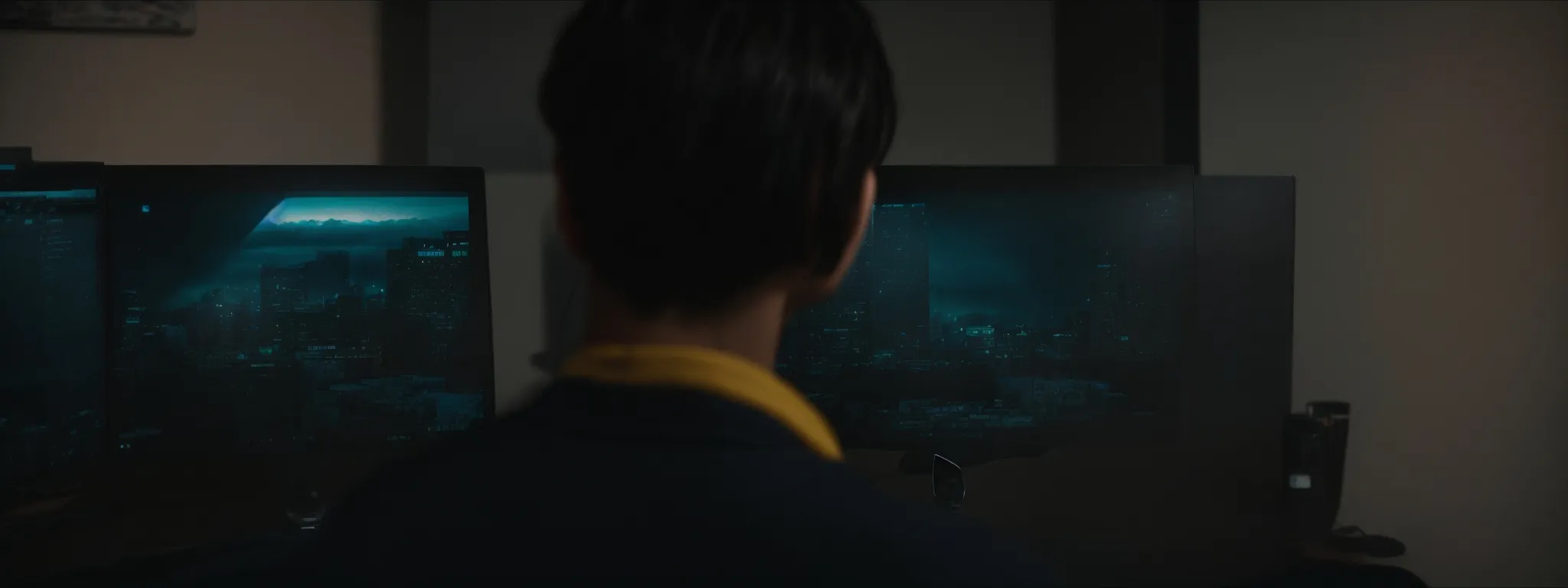
In an era where visual content rules the digital sphere, the importance of on-page image optimization cannot be overstated.
Webmasters and digital marketers nationwide are engaging in a quest to discover the most efficient tools that streamline image load times and elevate image quality.
This facilitates the exploration of software capabilities that include automatic resizing and responsive design support, pivotal for ensuring a consistent user experience across myriad devices.
With the understanding that enhanced on-page image performance has a profound impact on search engine optimization (SEO), it is evident that adept utilization of these tools is no longer optional but essential for competitive digital strategies.
Discover Tools That Improve Image Load Times
As web traffic becomes increasingly mobile, the urgency for swift image load times escalates. Webmasters turn to avant-garde tools capable of compressing image files without degrading visual quality, thereby reducing loading times and enhancing site speed across platforms.
Advanced algorithms and cloud-based optimization are the keystones of these tools, permitting images to load almost instantaneously. This revolution in image handling underpins a user’s digital experience, directly correlating to improved engagement and reduced bounce rates.
Explore Features That Enhance Image Quality
To propel image effectiveness, SearchAtlas SEO software incorporates state-of-the-art features that boost image quality, catering specifically to maintaining the integrity of visual content. This powerful tool applies advanced compression algorithms that preserve clarity and vibrancy, ensuring that images are both high-quality and web-ready.
Amidst the digital competition, crisp and professional images are a non-negotiable aspect of a stellar user experience. The adept use of SearchAtlas’s tools provides webmasters with the capability to execute intelligent image optimization, maintaining the balance between aesthetically pleasing images and optimal website performance:
- Advanced image compression without quality loss ensures fast load times and high-resolution visuals.
- Automated resizing capabilities for adaptive image display across devices foster a responsive user interface.
- Efficient handling of image formats utilizes modern standards for enhanced browser compatibility.
With the right toolset, the pursuit of superior image quality becomes a manageable task, driving visitor engagement and contributing positively to search engine rankings. The implementation of SearchAtlas’s robust features specifically addresses these needs, rendering it an indispensable component in any SEO toolbox for on-page image optimization.
Learn About Automatic Resizing and Responsive Design Support
SearchAtlas SEO software emerges as a powerful ally for webmasters, featuring automatic resizing and responsive design support, which are instrumental in optimizing images for varied screen sizes. This intelligent resizing ensures that visuals maintain their impact and clarity, whether viewed on a desktop monitor, tablet, or mobile device, advocating for a seamless user experience.
Responsive design support integrated within the SearchAtlas tools adapts images in real-time, contributing to faster page loading times and a more engaging user interface. By automating the adjustment process, the software assuages the burden on developers and marketers, enabling them to focus on strategic initiatives rather than manual image formatting.
Understand the Impact of Optimization on SEO
In the realm of digital marketing, the optimization of images is a critical factor that influences SEO. Crisp, fast-loading images enhance the user experience, signaling to search engines that a website provides valuable content and warrants a higher ranking in search results.
Effective image optimization transcends mere aesthetics, with properly tagged and compressed visuals facilitating site crawlability. When SearchAtlas SEO software solutions are employed, images become assets that not only captivate users but also contribute to the organic visibility of a website.
| SEO Aspect | Impact of Image Optimization |
|---|---|
| Page Load Speed | Improved loading times contribute to better user experience and search engine rankings. |
| Crawl Efficiency | Optimized images facilitate a smoother crawl by search engine bots, aiding indexation. |
| User Engagement | High-quality, relevant images can lower bounce rates and encourage deeper site exploration. |
| Keyword Relevance | Alt attributes and file names provide contextual clues to search engines, reinforcing keyword signals. |
Leveraging Automated Alt-Text Generation for SEO
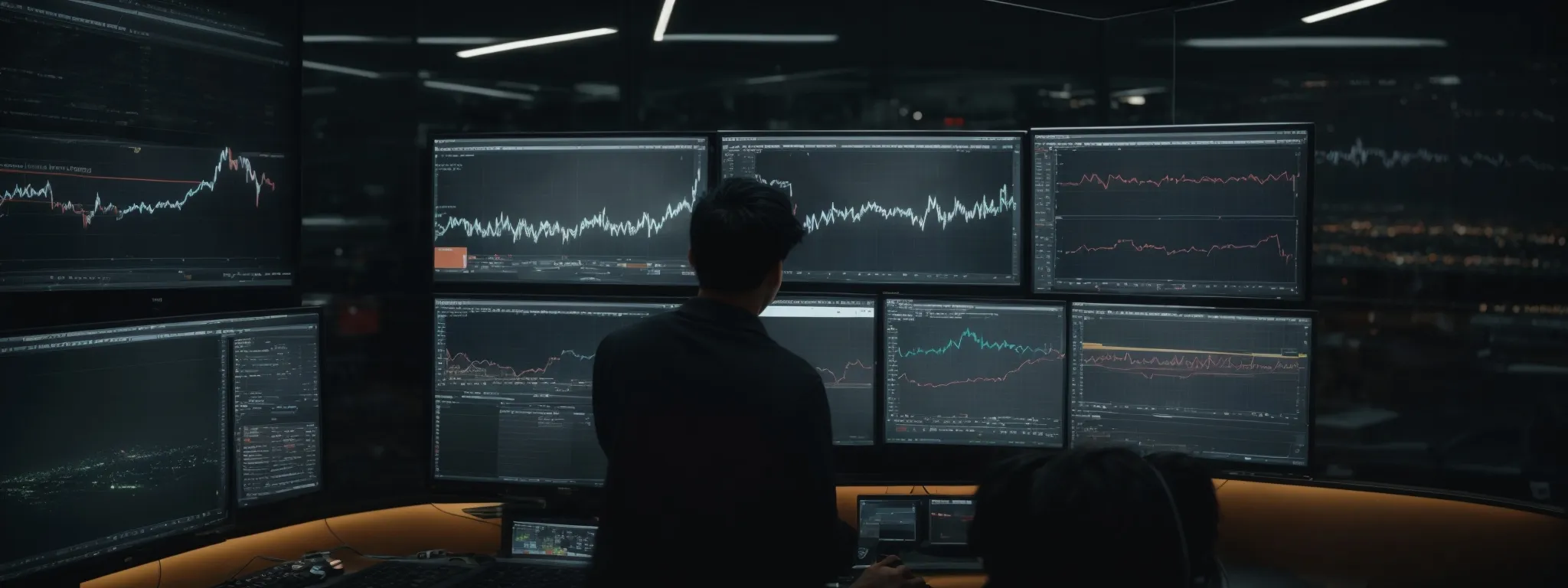
In the intricate mosaic of on-page SEO, alt-text stands as a crucial element often underestimated by webmasters.
Alt-text, or alternative text, provides context for images, facilitating a better understanding for search engine algorithms and enhancing accessibility for users with visual impairments.
With the advent of AI-driven technologies, SearchAtlas SEO software solutions provide innovative tools that streamline the process of creating accurate and descriptive alt attributes.
These tools not only improve a website’s accessibility and user experience but also fortify its standing in search engine results.
Queries about how to efficiently update alt attributes in bulk are common amongst site managers, and the capabilities presented by SearchAtlas address this need effectively, empowering webmasters to optimize their visual content with precision and scale.
Find Tools That Offer AI-driven Alt-Text Suggestions
In the age of sophisticated search engine algorithms, webmasters have recognized the pivotal role of alt-text in both SEO and web accessibility. Innovative tools like those offered by SearchAtlas now utilize AI to suggest alt-text, greatly enhancing the optimization process.
The implementation of AI-driven alt-text tools equips webmasters to elevate their SEO strategies. SearchAtlas, in particular, stands at the forefront, providing insightful alt-text suggestions that align with content and improve overall search engine visibility.
Importance of Accurate and Descriptive Alt Attributes
The significance of alt attributes in the arena of search engine optimization cannot be overstated: They serve as the textual counterpart to the visual content, providing a description to search engine crawlers. Accurate and descriptive alt text enhances a website’s accessibility features, which benefits users who rely on screen readers, and signals web inclusivity to search engines, potentially bolstering SEO rankings.
| SEO Element | Function of Alt Attributes |
|---|---|
| Accessibility | Provides text equivalents for images, aiding users with visual impairments. |
| SEO Value | Improves website understanding for search engines through contextual descriptions. |
| User Experience | Ensures content is consumable even when images fail to load or are turned off by the user. |
By implementing precise and detailed alt text for each image, website owners can leverage these attributes to effectively convey the subject and purpose of visual content to search engines. This practice not only reinforces the topical relevance of the related webpage content but also capitalizes on the opportunity to incorporate valuable keyword phrases in a natural, non-spammy manner, contributing positively to the website’s SEO footprint.
Impact of Alt-Text on Search Engine Rankings
The correct implementation of alt-text within images can dramatically influence a website’s search engine rankings. By Creating Clear and Contextually Relevant Alternative Descriptions, webmasters can provide search engines with valuable data that increases the relevance and discoverability of their pages in image searches.
Alt-text enriches the semantic meaning of on-page elements, bridging the gap between visuals and text for search engine algorithms. This augmentation of content relevancy is a vital component that can lead to higher placements on search engine results pages, particularly as image-led search behavior persists and evolves.
| SEO Factor | Contribution of Alt-Text |
|---|---|
| Image Search Visibility | Descriptive alt-text enhances visibility in image search results, drawing more visitors to a website. |
| Contextual Relevance | Search engines utilize alt-text to understand image content, improving the relevance of search queries. |
| Comprehensive Indexing | Informative alt descriptions aid in thorough indexing of visual content by search engines. |
Options for Bulk Updating Image Alt Attributes
Embracing the power of SearchAtlas SEO software presents an opportunity for webmasters to refresh their website’s image alt attributes en masse. This tech-forward solution efficiently updates metadata across extensive image libraries, enabling content managers to optimize their visual assets rapidly and adhere to SEO best practices with minimal effort.
SearchAtlas’s technology streamlines the otherwise laborious task of enhancing image attributes, offering a sweeping approach that adjusts alt text across an entire website. This capability not only saves precious time but also aligns with the strategic goal of boosting a site’s SEO profile by ensuring consistency and relevance in image descriptions.
Utilizing Image Plagiarism Checkers to Protect Content
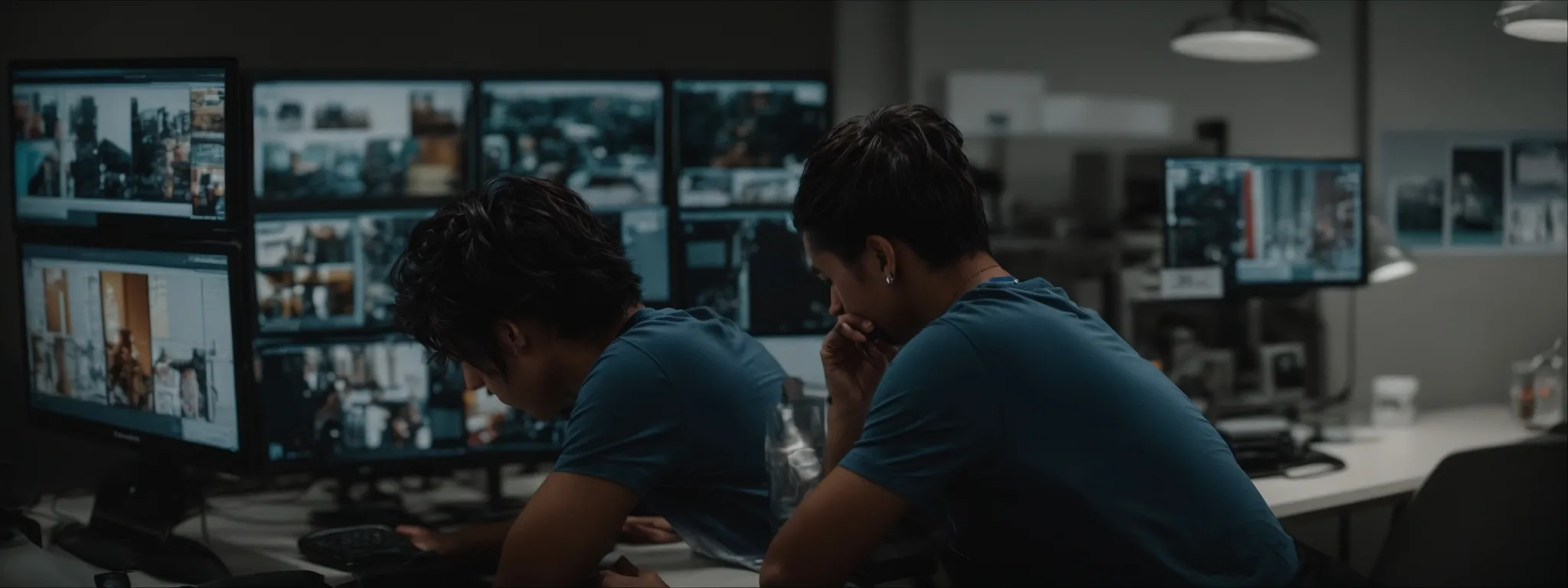
In an era where visual content is frequently shared and repurposed across the expansive web, protecting one’s digital assets has become fundamental to maintaining brand integrity and content originality.
Image plagiarism checkers are increasingly serving as a vital tool in a webmaster’s arsenal to safeguard against unauthorized image usage, potentially bolstering a website’s SEO performance by ensuring content uniqueness.
This section delves into the mechanics of image plagiarism detection tools, assesses their role in reinforcing SEO, and considers the legal aspects of image utilization and protection.
Moreover, it examines tools that provide seamless integration with copyright enforcement processes, empowering creators with the ability to preserve their intellectual property rights in the digital space.
Identify Tools to Detect Unauthorized Image Usage
As the digital landscape grapples with the proliferation of content theft, SearchAtlas by LinkGraph has emerged as a beacon for webmasters seeking to protect their intellectual property. This robust SEO software solution offers advanced image plagiarism checkers designed to trace online visual assets, revealing instances of unauthorized image usage and allowing for swift protective action.
The essential capabilities provided by these tools facilitate the maintenance of brand integrity and the uniqueness of on-page content, which is fundamental to SEO effectiveness. By seamlessly integrating with digital copyright enforcement processes, SearchAtlas grants content creators the vitality to uphold their ownership rights and forestall the dilution of their online presence.
Understand How Plagiarism Checkers Can Aid SEO
Image plagiarism checkers serve an integral role in maintaining the SEO health of a website by ensuring that the visual content remains unique and unduplicated. By detecting copied images, such tools assist webmasters in protecting their site’s search engine credibility, which could be inadvertently compromised through the indexing of identical content on multiple domains.
When SearchAtlas by LinkGraph is employed, these technological safeguards bolster a site’s originality and alignment with search engine ranking parameters. The software’s ability to reveal unauthorized image use allows webmasters to preserve the distinctiveness required for solid search engine results positioning, underlining the importance of originality for a statutory SEO strategy.
Explore the Legality of Image Use and Protection
In the digital era where images can be rapidly disseminated, understanding the legal framework governing image use is critical for creators and webmasters. Regulations such as copyright law dictate the rights of original content creators, offering protection against unauthorized replication and distribution, which can compromise both the integrity of one’s work and the SEO value of a website.
Employing SearchAtlas by LinkGraph, webmasters can navigate the complexities of legal image use by ensuring their content remains exclusive, thereby upholding compliance with copyright laws. This vigilance is integral to protecting a site’s authenticity, reinforcing not only its legal standing but also fortifying its search engine ranking potential through the use of unique, lawful images.
Tools That Seamlessly Integrate With Copyright Claims Processes
Amid the pervasive threat of image misuse online, webmasters are increasingly turning towards Sophisticated SEO Software Solutions like SearchAtlas by LinkGraph, which provide robust image plagiarism checkers. These advanced tools boast seamless integration with copyright claims processes, enabling swift identification of content theft and facilitating the enforcement of intellectual property rights.
SearchAtlas by LinkGraph represents a confluence of technology and legal process efficiency, offering webmasters the means to safeguard their assets with minimal friction. This integration streamlines the workflow from detection to action, helping maintain the uniqueness of visual content which is pivotal for sustaining SEO value and brand authenticity in the competitive digital landscape.
Analyzing Image Engagement With Heatmap Tools
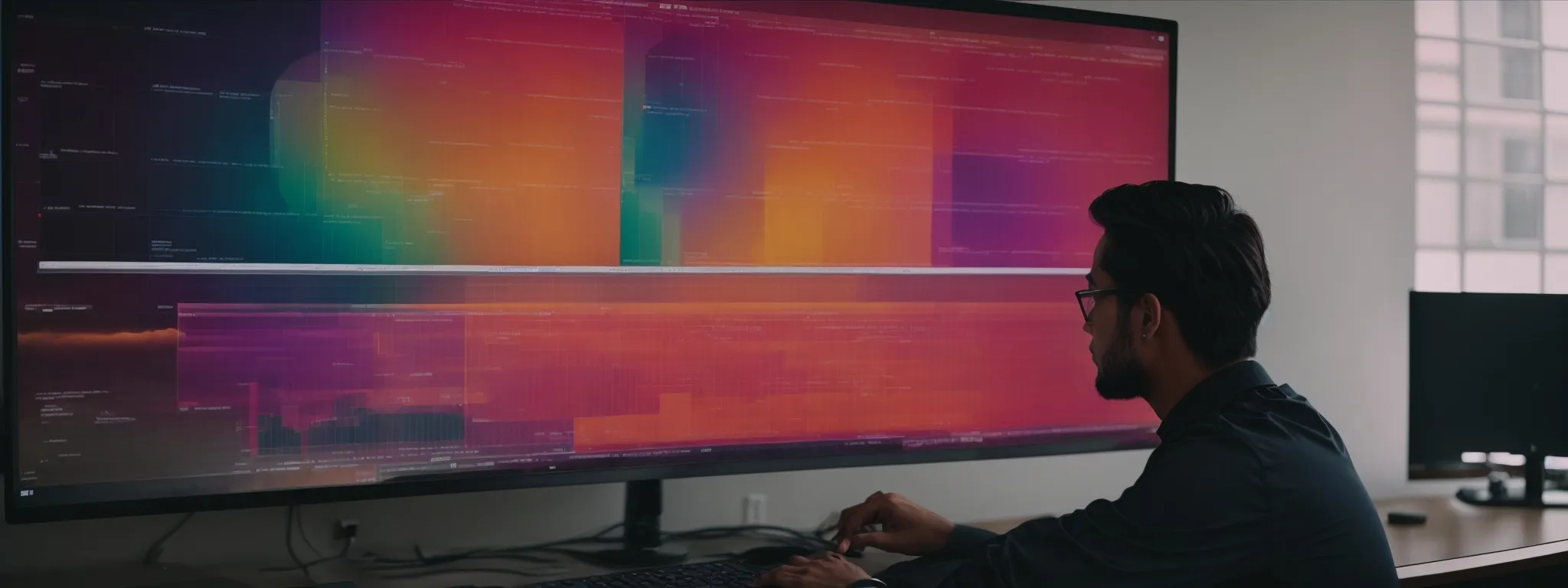
In the increasingly competitive landscape of digital marketing, understanding user interaction with on-page elements has become pivotal for webmasters seeking to optimize their websites for both user engagement and search engine performance.
Enter heatmap tools—advanced analytical solutions that provide a visual representation of how users interact with a webpage, including clicks, taps, and scrolling behavior.
These indispensable resources enable professionals to dissect and interpret user engagement patterns specifically around image placement, guiding them toward data-driven decisions for optimizing visual content.
Highlighting the intricate relationship between image interaction and user behavior, heatmap tools offer meaningful insights that can transform not only the visual appeal of a website but its overall effectiveness in capturing and maintaining user attention.
Tools That Reveal User Engagement Through Heatmaps
Heatmap tools are transforming the way webmasters understand user interactions on their web pages. By offering a visual representation of clicks, movements, and scrolling, these tools unlock the narrative of user behavior, enabling data-driven decisions that enhance on-page image effectiveness.
Equipping oneself with heatmap analysis software is like gaining a lens through which the otherwise hidden patterns of user engagement come into sharp focus. They serve as a compass, guiding content placement and design modifications that directly cater to user preferences and foster a more intuitive user experience:
- Visual heatmaps reveal the zones of highest engagement, informing strategic image placement.
- Tracking scroll depth helps identify the most captivating images that retain user attention.
- Insights from click data assist in optimizing clickable images for improved user interaction.
The intelligent application of these insights is essential in crafting a user-centric page layout that supports increased interaction and satisfaction. With these tools, the art and science of webpage design are harmonized, leading to a more engaging and successful online presence.
Correlating Heatmap Data With Image Placement
Heatmap tools equip webmasters with precise analytics by displaying areas of high user engagement on their web pages, specifically around the placement of images. Leveraging this data allows professionals to discern patterns and make informed decisions on image positioning, ensuring each visual asset is placed strategically to capture the viewer’s attention and thus, enhance the page’s overall user experience.
The science behind heatmap technology empowers webmasters to optimize their site’s visual layout by aligning it with user preferences revealed through interaction metrics. This direct correlation between the heatmap data and image placement can lead to significant improvements in page performance, engagement level, and ultimately, the effectiveness of the site’s visual communication strategy.
Utilize Engagement Insights for Image Optimization
Webmasters are capitalizing on the analytical power of heatmap tools to reinterpret image optimization techniques. By utilizing insights into where and how users interact with page elements, they’re revamping visual strategies to align more closely with user behavior, hence boosting the efficacy of their image placements.
Such data-driven methodologies harness the user engagement intelligence provided by heatmap analyses to refine the visual narrative told by on-page images. This strategic approach is revealing a new calibration for image use that not only captivates users but also enhances their journey through the digital content, reinforcing the synergy between aesthetics and performance optimization.
Case Studies Showing Improved Metrics After Heatmap Analysis
Case studies across various industries have empirically demonstrated the value of heatmap tools in enhancing image engagement metrics. For instance, an e-commerce retailer observed a 20% lift in user interaction after adjusting image placement based on heatmaps, correlating with upticks in conversion rates and time spent on the product pages.
In another enlightening example, a large-scale content publisher deployed heatmap analysis to refine their image-heavy articles, leading to a remarkable reduction in bounce rates. Through strategic repositioning of images to areas with higher engagement, the publisher increased average session durations and improved overall content performance.
Advanced Analytics for Image Performance Monitoring
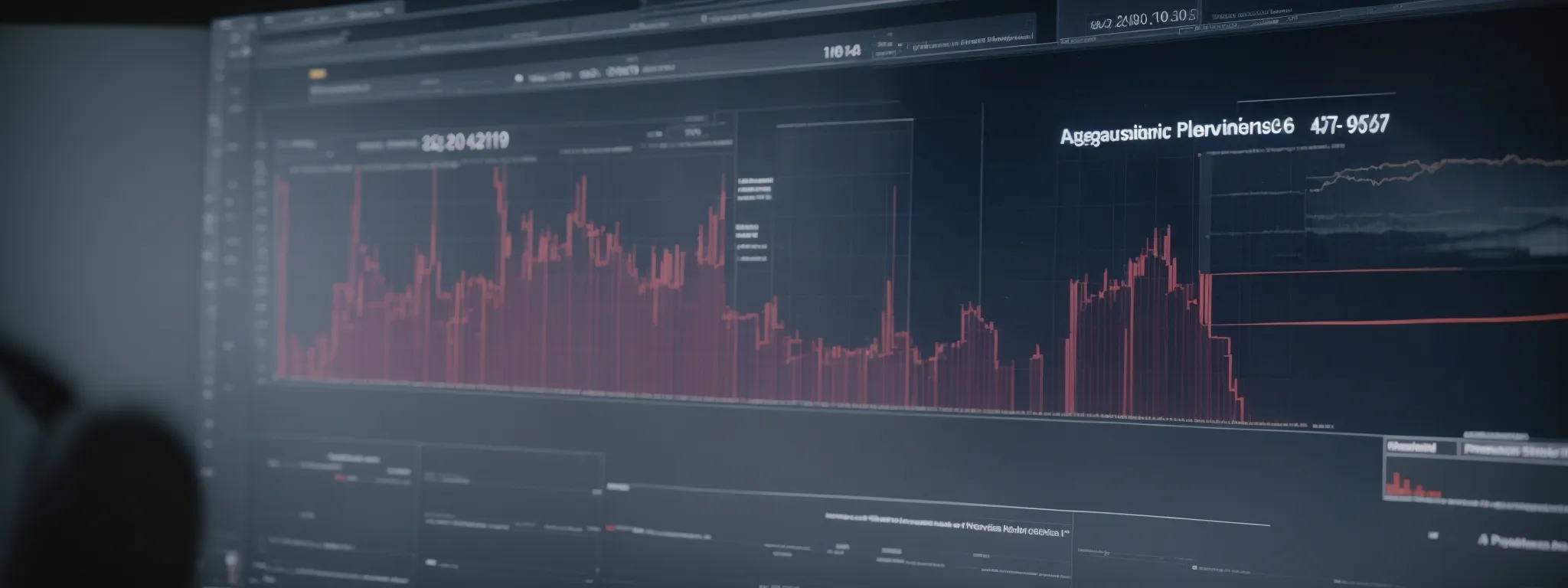
As part of the sophisticated toolkit employed by today’s digital professionals, advanced Analytics for Image Performance Monitoring emerge as the linchpin in the holistic examination of on-page image efficacy.
These analytics platforms, such as those encapsulated by SearchAtlas by LinkGraph, render detailed reports that meticulously dissect image engagement, providing clarity and actionable data.
They enable tracking of pivotal performance indicators and foster an understanding of the visual content’s role in the competitive digital ecosystem.
This holistic approach ensures that image metrics are not isolated but integrated, enhancing the broader narrative of total website performance optimization.
Tools Providing in-Depth Image Analytics and Reports
Within the sphere of image performance monitoring, the deployment of tools that offer comprehensive analytics and detailed reports is instrumental for webmasters looking to fine-tune their on-page image strategy. These tools perform deep dives into the nuances of image interactions, delivering granular insights that encompass metrics such as engagement, load times, and conversions attributed to visual elements.
SearchAtlas by LinkGraph is at the forefront of this analytical prowess, presenting users with an intuitive dashboard where they can scrutinize the minutiae of their image performance data. This SEO software equips web professionals with the intelligence needed to make informed decisions regarding image optimizations that can elevate both user experience and SEO standing.
Tracking Key Image Performance Indicators Over Time
To comprehend the full scope of an online entity’s image impact, tracking key performance indicators (KPIs) over an extended period becomes essential. SearchAtlas by LinkGraph provides webmasters with advanced tools capable of monitoring and recording these vital metrics, offering insights into trends and long-term performance of image content.
Implementing a consistent measurement strategy for image-related KPIs, such as click-through rates, bounce rates, and image load times, allows for the accumulation of valuable data. It’s this data compilation that equips webmasters with the ability to discern actionable patterns and make strategic improvements, optimizing for both user experience and search engine considerations.
Competitive Analysis Features for Image Benchmarking
SearchAtlas by LinkGraph transcends basic image analysis by incorporating competitive analysis features, allowing users to benchmark image performance against industry peers. This functionality provides insights into how visuals on one’s own site stack up in comparison with others, equipping webmasters with actionable intelligence to refine their image optimization strategies.
Incorporating competitive benchmarking into one’s image analysis toolkit enables the detection of performance gaps and the identification of best practices in image utilization. Through SearchAtlas, webmasters can harness this comparative data to drive their imagery towards higher engagement and increased SEO efficacy.
Integrating Image Analytics With Overall Website Performance Tools
In today’s digital marketing era, the fusion of image analytics with a suite of website performance monitoring tools marks a paradigm shift in on-page optimization strategies. SearchAtlas by LinkGraph exemplifies this integration, enhancing the capabilities of webmasters to draw meaningful correlations between visual content engagement and overarching site metrics like conversion rates and SERP positioning.
LinkGraph’s SEO software solutions proffer a holistic view by merging image performance diagnostics with comprehensive web analytics, enabling a comprehensive assessment of how on-page visuals affect and are influenced by other elements of the site. This convergence of data streams is pivotal in crafting a unified, high-performing digital presence that aligns with both user expectations and search engine algorithms.
Conclusion
The optimization of on-page images is a crucial aspect of website management, demanding webmasters to arm themselves with the most effective tools for image usage analysis.
These tools facilitate an understanding of how images perform in terms of load times, engagement, and SEO impact, which is essential for maintaining a competitive digital edge.
Scalable and integration-friendly tools streamline the workflow across Content Management Systems, increasing efficiency while monitoring image performance.
Close attention to user reviews and community support further ensures the selection of reliable tools that resonate with real-world applications.
Advanced image analysis tools significantly enhance user experience by accelerating load times, improving image quality, and supporting responsive design, all of which contribute positively to user engagement and SEO.
Heatmap tools specifically offer invaluable insights into user interactions, allowing for strategic image placements that maximize engagement.
SEO-focused features, such as AI-driven alt-text suggestions and image plagiarism checkers, uphold content uniqueness and legality, vital to search engine rankings.
Through robust analytics, webmasters can track image performance, benchmark against competitors, and integrate findings with broader website metrics to optimize their visual assets.
In essence, these essential tools not only refine the visual appeal and accessibility of a site but also solidify its SEO performance, proving indispensable for webmasters in creating successful, engaging online experiences.














































































